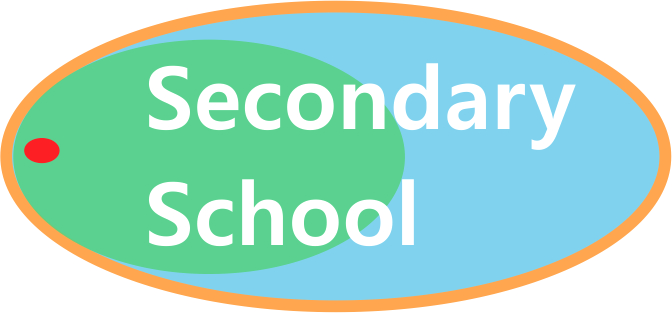BGE Secondary
Estimates tell us that around 1 in 100 young perople are autistic. This suggests that we have many autistic children in our secondary BGE setting.

Early recognition and intervention ensures that young people can receive the most appropriate support and in turn benefit from the best outcomes; autistic learners in secondary schools may already have an identification of autism. However, for a variety of reasons some young people may not have an identification and one may not be sought. Irrespective of this, the practitioner will be working with the family to support a young person who appears to have social communication difficulties which may or may not lead to investigation for autism.
Autistic learners present with a variety of strengths and challenges. With suitable understanding, support and adaptation, they can thrive in secondary school and will feel safer, less anxious and have an increased understanding of what is expected of them. This in turn will mean that the young person is more likely to have increased attainment, improved engagement and is less likely to become anxious and stressed.
Secondary school BGE and autism
It is extremely important that autism is not perceived to be negative, autistic learners have many positive attributes and presenting autism as a ‘deficit model’ is not helpful. For example, autistic learners may be skilled at paying attention to detail, follow clear rules and are honest. These abilities can be used to encourage engagement, and enable them to make their own, unique contribution within the secondary setting.
The Toolbox section on Understanding Autism provides a range of information. When planning to support a young person in secondary school, it is important that there is an understanding of the way in which these factors affect the individual. The unique make-up of the school community will be an important consideration. For example:
- Autistic young people may also have a good or above average range of vocabulary. However, having a complex vocabulary does not mean that the child will understand the same level of vocabulary, nor that the child will understand the vocabulary that he or she is using. They may present with difficulties extracting inference from text.
- The environment of the classroom and ethos of the school can have a negative impact if they are not inclusive. The Professional Development section has information on a professional learning resource to support the inclusive classroom the ‘Framework for inclusion: CIRCLE Secondary’.
- The size of the secondary school and range of social and learning opportunities
Autistic learners (especially when diagnosed in later childhood) may have had negative experiences in relation to school. These experiences will have decreased confidence, and self-esteem. Rebuilding self-esteem is an important step. Often autistic learners have a fear of failure, and so negative responses from staff within the school setting can increase the anxiety and subsequent negative behaviour.
The Welsh Local Government Association has developed a helpful guide for secondary schools.
‘Autism: A Guide for Mainstream Secondary Schools’
Select ‘here‘ to access the guide.
Supporting Autistic Learners within the Secondary (BGE) phase (click here)
BGE in secondary school offers a wider range of experiences for all learners. As the autistic learner, along with their peers, progress through S1 to S3 (this may be earlier of later for some) they will experience incremental challenges in their learning and social interactions. Understanding, support and differentiation in teaching styles and approaches will be needed and shared between home and school to minimise difficulties the child may have in accessing the curriculum and engaging with their peers. This will also provide positive opportunities to maximise the autistic learners’ areas of strengths, interests and motivation.
The Introduction to BGE page has suggestions which will support autistic learners, practitioners and families: here are some which are focused on the secondary school context.
- Liaise with colleagues in primary school or Pupil support/support for learning to support an effective transition.
- Subject teachers should liaise with colleagues in pupil support/support for learning to find out about the learner’s profile, their supports and approaches – look at the communication passport or information the autistic learner has prepared for staff
- Work in partnership with the family
- Ensure all practitioners who work with the class have access to the appropriate information in order to support the learner
- Ensure the autistic learner knows where to access support and a quiet space if required
- Ensure the autistic learner knows the routines of their classrooms
- Ensure the autistic learner knows the routines of the school
- Be aware of the communication style the autistic learner needs
- Keep routines consistent.
- Ensure SQA Assessment arrangements are in place if required – this includes for coursework
- Be literal (for example, don’t talk about it ‘raining cats and dogs’).
- Keep routines consistent
- Use visual supports if appropriate
- Give plenty of warning about any change
- Ensure the classrooms are inclusive environments – Click here to access the ‘Framework for inclusion: CIRCLE Secondary’
- Use visual cues (pictures or objects) to help communication and understanding
- Click here to down load an example of a visual time table (Same link to resource in 8.2d)
- Communicate with the autistic learner child what they should do, not what they shouldn’t
- Work in partnership to identify triggers (the things which seem to cause strong reactions) and work out ways to reduce these
- Some situations will require additional planning in advance. For example, breaks and lunch times, trips and excursions and outside learning
- Assemblies
- School productions – shows and concerts.
